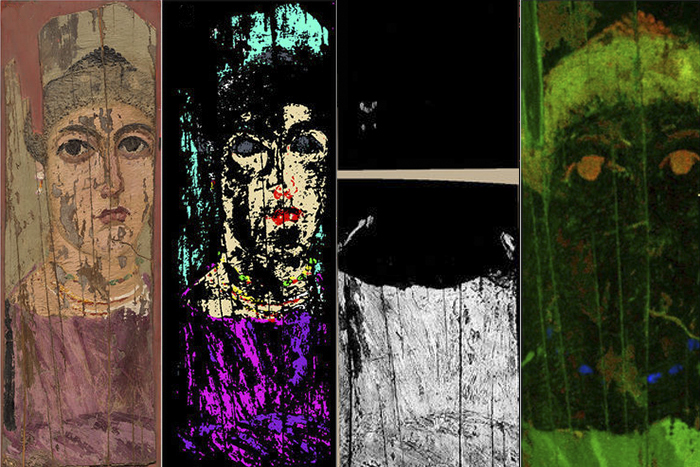
Forensic art experts just got a little more competition. Scientists at UCLA and the National Gallery of Art have developed a new technique for analyzing ancient paintings that promises to reveal not only when they were made but how.
Developed by Loanna Kakoulli, a professor of materials science and engineering at UCLA, and John Delaney, an imaging scientist at the National Gallery of Art, the technique allows researchers to map the molecular and elemental composition of a painting’s surface and determine the materials used by the artist and the order in which they were applied. It also puts the work into historical and geographical context, revealing how and when the artist’s paints were made.
“The idea of these macroscopic imaging techniques is to provide more information about how the painter painted the composition,” Delaney told artnet News. “What we’re trying to do is to give a high-level assessment of the pigments and their distribution, to identify compositional changes—such as a painting done over another—and then to provide more information about the under-drawing and preparatory sketches. These are all pieces of information that are helpful for both conservation and art historical studies.”
The new analytical chemistry technique, laid out in a paper published in Scientific Reports, has been dubbed “macroscale multimodal chemical imaging,” and is a combination of three pre-existing processes: hyperspectral diffuse reflectance and luminescence, which measure the amount of light reflected by the artwork—and therefore, the exact color of its pigment—and X-ray fluorescence, which determines the elements of the materials used.
(a) Color image of the Fayum painting “Portrait of a woman”, c. 2nd century AD, accession number 1956.12.1, gift of Lewis Einstein, in the collection of the National Gallery of Art, Washington DC, depicting a female figure from a noble family as conveyed by the hairstyle and jewelry (dimensions: 34.6 × 11.5 cm). Courtesy National Gallery of Art, Washington; (b) Detail of the painting, illustrating different application methods of the heated wax-based paint resulting in distinct surface topography, most likely using three different tools as described by Pliny: a fine painter’s brush or penicillus (1), a cauterium (a metal spoon or hollowed spatula) (2), and a cestrum (a type of engraver) (3). Courtesy of the National Gallery of Art.
What makes this technique particularly significant is the fact that it’s non-invasive, meaning that researchers don’t have to take a sample from the work to analyze it. It also generates images of the artworks’ layers, revealing how the painting became the painting.
“It helps add to the story,” said Delaney. “It’s much more instructive than a graph. Images themselves are compelling and can be interpreted by a variety of people.”
To demonstrate their method, the scientists analyzed a second-century Egyptian painting from the National Gallery’s collection, depicting an Egyptian noblewoman. Measuring only 35 centimeters tall, the artwork is believed to be a Fayum portrait—a type of panel painting attached to mummies in ancient Egypt, depicting the person embalmed.
Kakoulli and Delaney learned that the painting was encaustic, meaning its pigment was mixed with melted beeswax and burned into the substrate—a popular practice from that era. It was likely applied with three different tools: a fine painter’s brush, a cauterium (a metal spoon or spatula), and a cestrum (a type of engraver). They were also able to glean insights into the artistry behind the work: The depiction of subject’s garment, for instance, was colored with madder dye, a pigment extracted from roots, which would have been used to color the garment itself.
To be sure, the analytical chemistry technique has exciting implications for the art world. Beyond dating and conservation, it may well offer forensic lessons on ancient art-making—and the decisions that went into creating some of the world’s oldest works.